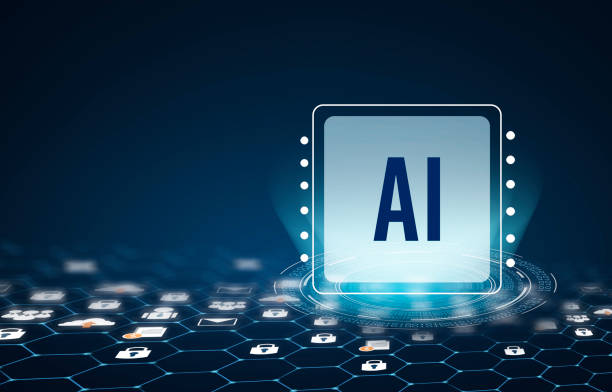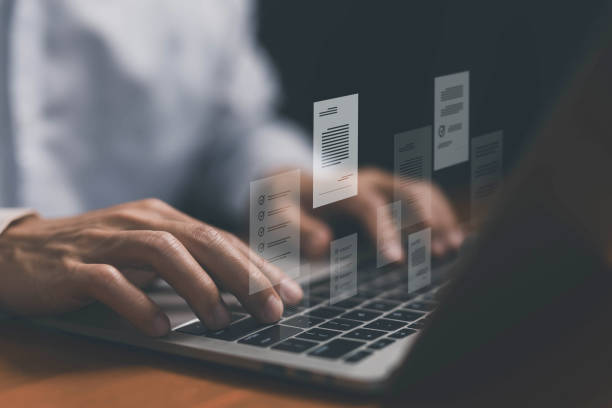Introduction to Secure Website Design and Its Importance
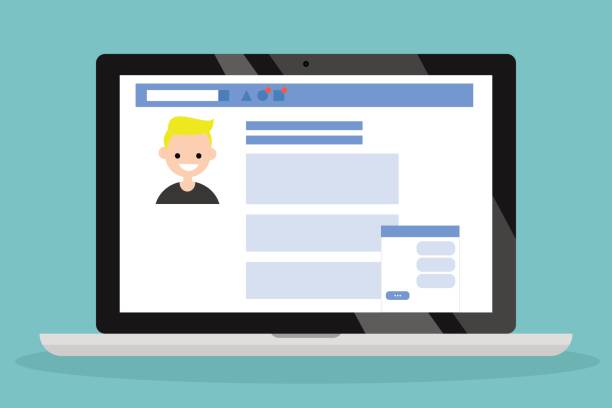
In today’s digital world, where #websites act as offices, stores, and information centers, the importance of secure website design has become more crucial than ever.
Website security not only protects sensitive user information but also ensures the credibility of your business.
Ignoring the principles of secure website design can lead to cyberattacks, data loss, and irreparable damage to brand reputation.
This introduction emphasizes the importance of a proactive approach to cyber threats and stresses that security should not be an afterthought, but rather integrated into the web development cycle from the very beginning.
Today, with the increasing complexity of attacks, the necessity for a reliable online platform where users can interact with confidence is growing.
Cybersecurity is no longer an option but a fundamental requirement for the survival and growth of any business in the online space.
This comprehensive process encompasses all aspects, from selecting reliable infrastructure to implementing advanced security protocols, to provide a secure and trustworthy web environment.
Losing potential customers due to an unprofessional website? RasaWeb is your answer! With our specialized corporate website design services:
✅ Enhance your business’s credibility and standing
✅ Experience more targeted customer acquisition
⚡ Act now for a free consultation!
Common Cyber Threats and Prevention Strategies
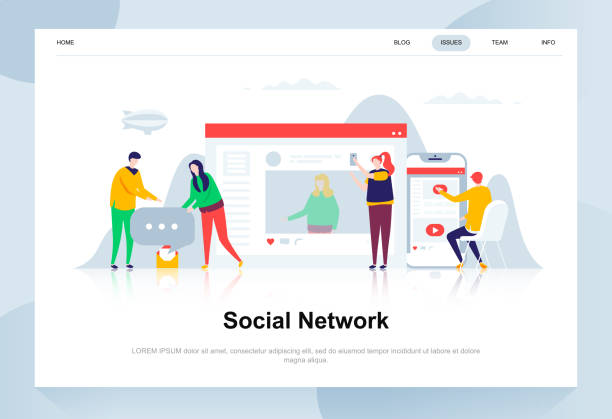
Secure website design requires a precise and deep understanding of common cyber threats targeting websites.
Attacks such as SQL Injection, Cross-Site Scripting (XSS), and Denial-of-Service (DDoS) attacks are just a few of these threats.
SQL Injection allows attackers to access or modify sensitive information by manipulating database inputs.
XSS enables the injection of malicious code into web pages, which can lead to session hijacking or content alteration.
DDoS disrupts website service by sending a large volume of traffic to the server.
Prevention strategies for these attacks include rigorous input validation, the use of Web Application Firewalls (WAF), strong password policies, and regular updates of systems and software.
To ensure secure website design, the development team must continuously stay informed about new vulnerabilities and implement best practices for secure coding.
This proactive approach forms the backbone of any website security strategy and is essential for maintaining data integrity, confidentiality, and availability.
Choosing a Secure Platform and Suitable Tools for Website Design
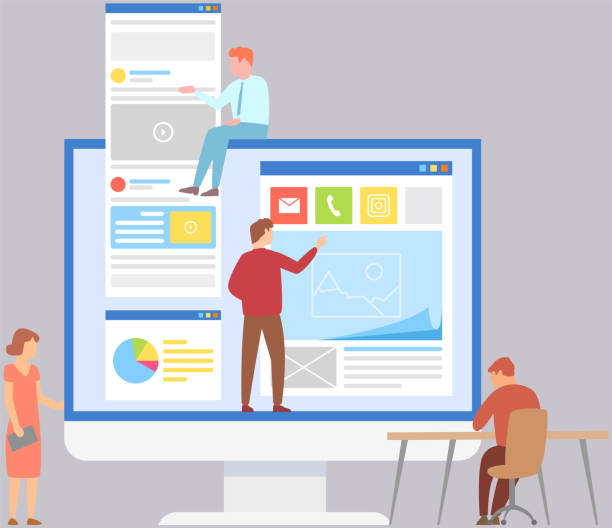
The foundation of a secure website design begins with choosing the right platform (CMS) and tools.
Content Management Systems like WordPress, Joomla, and Drupal, while popular and powerful, require secure configuration and continuous maintenance.
Selecting a platform with a strong security track record and an active developer community that continuously patches vulnerabilities is crucial.
Using web development frameworks such as Laravel or Django can also enhance security, as these frameworks offer many security features by default.
Vulnerability scanning tools, Web Application Firewalls (WAF), and Content Delivery Networks (CDN) are also among the tools that help improve security.
Here is a table of important security features when choosing platforms:
| Security Feature | Importance | Example/Description |
|---|---|---|
| Regular Updates | Crucial for patching vulnerabilities | Security patches and new versions |
| Strong Security Documentation | Guide for secure implementation | Official platform guides |
| Secure Plugin/Extension Ecosystem | Tested and reliable extensions | Only install from official and trusted sources |
| Built-in Security Capabilities | Default protections in the framework | Form validation, CSRF protection |
Furthermore, consulting with security experts and performing regular security audits are essential to ensure correct configuration and adherence to best practices in secure website design.
The right choice is the cornerstone of a secure and resilient website against attacks.
The Role of SSL/TLS Certificates in Web Security

One of the first steps on the path to secure website design is implementing an SSL/TLS certificate, which encrypts the communication between the user’s browser and the website server by enabling the HTTPS protocol.
This encryption prevents eavesdropping, tampering, or theft of information during transmission.
SSL/TLS certificates come in different types, including Domain Validation (DV) suitable for small websites and blogs, up to Organization Validation (OV) and Extended Validation (EV) which offer higher levels of authentication and are ideal for commercial websites and banks.
Using HTTPS not only ensures data security but also positively impacts website SEO, as search engines like Google rank HTTPS-enabled websites higher.
Also, these certificates strengthen user trust, as users recognize the green padlock icon in the browser’s address bar as a sign of a secure connection.
Ignoring this aspect of secure website design can lead to browser warnings to users about the site being insecure, resulting in a loss of visitors and customers.
Therefore, the proper installation and maintenance of SSL/TLS certificates is a non-negotiable component of a modern website security strategy.
Did you know 94% of the first impression of a company is related to its website design?
RasaWeb, by providing professional corporate website design services, helps you create the best first impression.
✅ Create a professional and trustworthy image for your brand
✅ Easier attraction of potential customers and improvement of online standing
⚡ Get a free corporate website design consultation from RasaWeb!
Securing the Database in Website Design
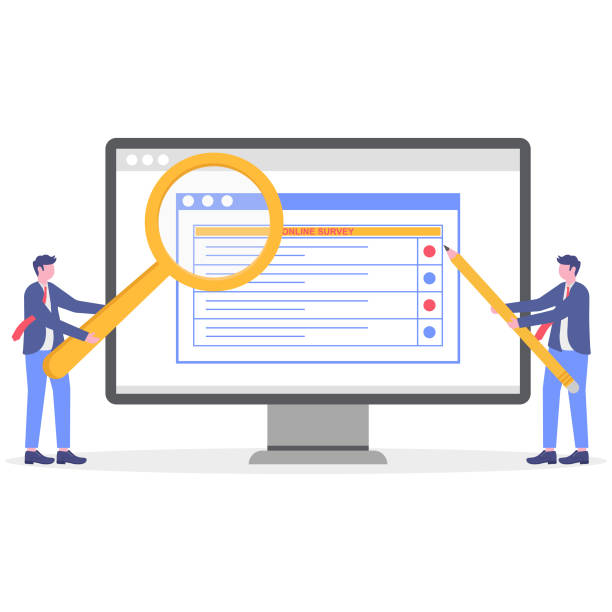
The database is the heart of any website, storing vital user information and site content.
Therefore, securing it is one of the most important pillars of secure website design.
One of the most common attacks on databases is SQL injection, which, by controlling user inputs and executing malicious SQL commands, allows attackers to access or modify information.
To prevent this, using Prepared Statements and parameterized queries is essential.
Also, applying the principle of Least Privilege for users and applications to the database, meaning each user or service only has access to the data and operations necessary for its task, is a key principle.
Encrypting sensitive data in the database, such as credit card information or passwords, even in case of a breach, ensures their security.
Using strong hash functions and salting for storing user passwords instead of storing them in plain text, are other vital measures.
Regular database maintenance, including applying security patches, monitoring suspicious activities, and regular and secure backups, is also essential for maintaining data integrity and availability.
These collective measures provide a robust defense layer for the database in a comprehensive approach to secure website design.
Strong Access Management and Authentication
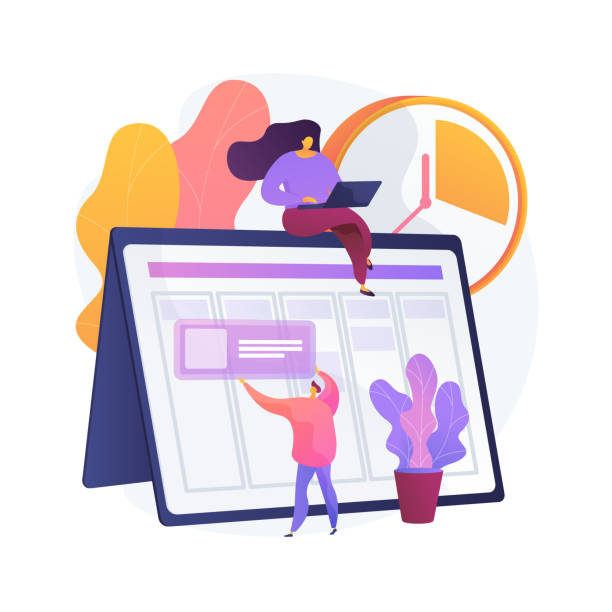
One of the pillars of secure website design is the implementation of strong access management and authentication systems.
These systems ensure that only authorized users have access to specific resources and their identity is properly verified.
Using strong and complex passwords that combine uppercase and lowercase letters, numbers, and symbols, along with mandatory policies for periodic changes, is the first step.
Beyond that, implementing Two-Factor Authentication (2FA) or Multi-Factor Authentication (MFA) adds a significant layer of security.
2FA requires identity verification through two distinct factors, such as a password and a code sent to a mobile phone or a fingerprint, which makes unauthorized access difficult even if the password is leaked.
Also, the role and permission management system must be carefully designed so that users and administrators only have access to the information and operations necessary to perform their duties (principle of least privilege).
This helps reduce the attack surface in case a user account is compromised.
Monitoring authentication logs and user activities to identify suspicious patterns and intrusion attempts is also an essential part of this process.
These comprehensive approaches significantly enhance overall website security and contribute to achieving secure website design.
Continuous Updates and Website Security Maintenance
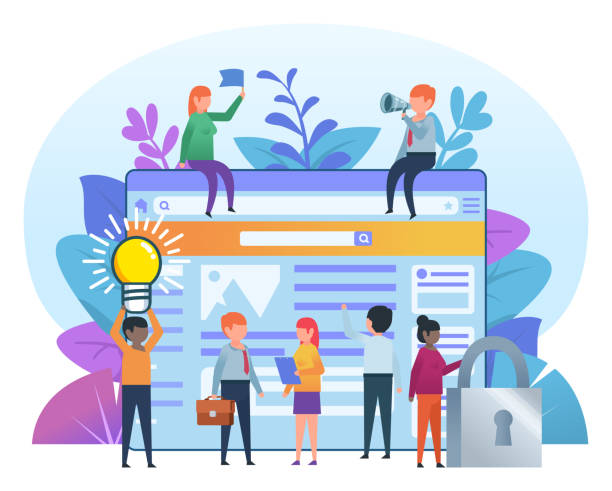
Secure website design is not a static process; rather, it requires continuous attention and updates.
Cyber threats are constantly evolving, and new vulnerabilities are discovered.
Therefore, regular security maintenance and timely updates are essential to maintaining website security.
This includes updating the server operating system, CMS platform (such as WordPress, Joomla), plugins, themes, and all libraries and frameworks used on the website.
Any delay in applying security patches can open a window for cyberattacks.
In addition to software updates, continuous monitoring of server logs to identify suspicious activities, regular website scanning to identify malware and vulnerabilities, and periodic penetration tests are also crucial.
These tests help identify weaknesses before they are discovered by attackers.
Here is a table of the security maintenance checklist:
| Security Action | Recommended Frequency | Description |
|---|---|---|
| Software Updates | Weekly/Monthly or immediately after patch release | Operating system, CMS, plugins, themes |
| Data Backup | Daily/Weekly | Data and database |
| Review Security Logs | Daily/Weekly | Suspicious activities, login attempts |
| Malware and Vulnerability Scan | Weekly/Monthly | Using automated and manual tools |
| Penetration Test/Security Audit | Annually/After major changes | Identifying weaknesses before attackers |
A strong maintenance strategy complements secure website design and helps maintain website integrity and availability against emerging threats.
Countering DDoS Attacks and Network Security
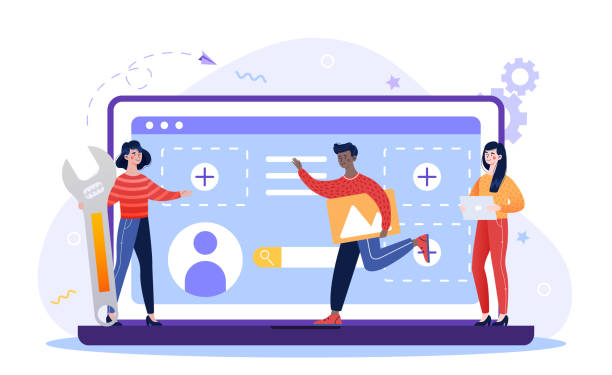
DDoS (Distributed Denial of Service) attacks are one of the most destructive threats that can take a website offline and cause serious damage to a business.
In these attacks, attackers use a network of compromised computers (botnet) to send a massive volume of traffic towards the website server to overwhelm and incapacitate it.
To counter these attacks and maintain secure website design, strong network security implementation is crucial.
Using a CDN (Content Delivery Network), which distributes traffic globally and can filter malicious traffic, is an effective solution.
CDNs can identify and block bogus requests before they reach the main website server.
In addition to CDN, implementing hardware and software firewalls, Intrusion Detection Systems (IDS), and Intrusion Prevention Systems (IPS) at the network layer helps identify and counter suspicious traffic patterns.
Also, collaborating with Internet Service Providers (ISP) and web hosts that offer DDoS protection solutions can be very beneficial during an attack.
Crisis planning and having a rapid response protocol in case of an attack are also essential parts of the network security strategy.
These measures help your website remain resilient against the shock of DDoS attacks and maintain service stability, which is a fundamental principle of secure website design.
Is your e-commerce site ready to attract maximum customers and increase sales? RasaWeb transforms your online business with modern and efficient e-commerce website designs.
✅ Increased speed and improved SEO
✅ Excellent user experience on mobile and desktop⚡ Get a free e-commerce website design consultation from RasaWeb!
Secure Data Backup and Recovery
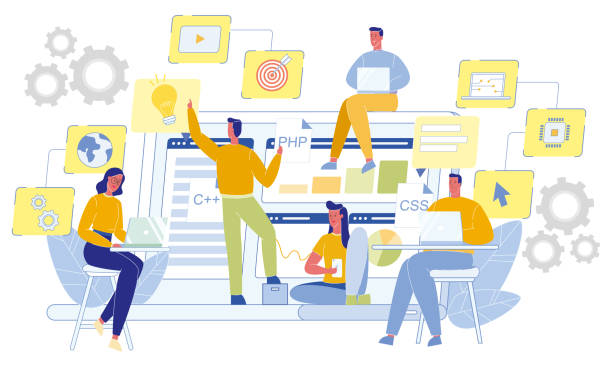
Even with the best secure website design strategies, the possibility of unexpected incidents such as successful cyberattacks, human errors, or hardware failures always exists.
In such situations, having a secure and efficient data backup and recovery plan plays a vital role in minimizing downtime and data loss.
Regular and automated backup of all website data, including files, databases, and configurations, is essential.
These backups should be stored in various secure locations (such as cloud storage or separate servers) to allow recovery from other versions if one is lost.
Encrypting backups is also crucial to prevent unauthorized access to information if they are exposed.
In addition to backup, periodic testing of the data recovery process is of high importance.
Many organizations only realize their backups are corrupted or unrecoverable when it’s too late.
Therefore, performing regular recovery tests ensures that data can be correctly restored when needed.
Having a Disaster Recovery Plan that includes precise steps for restoring the system to an operational state after an incident complements this backup process.
This proactive approach is an integral part of any secure website design and ensures business continuity.
The Future of Secure Website Design and New Trends

The subject of secure website design is constantly evolving and adapting to emerging threats.
A look into the future shows that new approaches and advanced technologies will play a key role in strengthening website security.
One of the most important future trends is the increased use of Artificial Intelligence (AI) and Machine Learning (ML) for detecting and preventing cyberattacks.
These technologies can identify suspicious traffic and behavioral patterns with higher accuracy and automatically respond to threats.
The concept of “Zero Trust” is also increasingly gaining importance; an approach where no user or device, even if within the network, is automatically trusted, and every request requires verification.
Cloud security will also become a top priority as more businesses migrate to the cloud.
Developers and website administrators must enhance their knowledge in API security, microservices, and secure website design in containerized and serverless environments.
Furthermore, increasing user awareness and educating them about phishing and social engineering, which are often the weakest security link, remains a challenge and an opportunity to enhance overall security.
The future of secure website design depends on keeping pace with technological advancements and adopting proactive and intelligent approaches to counter the evolving threat ecosystem.
Frequently Asked Questions
| Question | Answer |
|---|---|
| 1. What does secure website design mean? | Secure website design means creating a website that is resistant to cyberattacks and protects user and server information. |
| 2. Why is security important in website design? | To prevent data breaches, protect user privacy, maintain user trust, and avoid financial and reputational losses. |
| 3. What are the most common web vulnerabilities? | SQL Injection, Cross-Site Scripting (XSS), Cross-Site Request Forgery (CSRF), Broken Authentication, and Security Misconfiguration. |
| 4. How can SQL Injection be prevented? | By using Prepared Statements / Parameterized Queries, ORMs, and Input Validation. |
| 5. What is the role of HTTPS and SSL/TLS in site security? | HTTPS uses the SSL/TLS protocol to encrypt communication between the user’s browser and the server, preventing data eavesdropping and tampering. |
| 6. What measures should be taken to prevent XSS attacks? | Input validation, Output Encoding to prevent malicious code execution, and using Content Security Policy (CSP). |
| 7. What does a strong password policy include? | Mandatory use of long passwords, a combination of uppercase and lowercase letters, numbers, and special characters, and prevention of reuse. |
| 8. How does Two-Factor Authentication (2FA) help with security? | Even if a user’s password is compromised, the attacker cannot access the account without access to the second authentication factor (such as an SMS code or app). |
| 9. What is a Web Application Firewall (WAF) and what is its use? | A WAF is a firewall that monitors and filters HTTP traffic between a web application and the Internet to prevent common web attacks like SQL injection and XSS. |
| 10. Why are regular updates of software and libraries important? | Updates often include security patches to fix discovered vulnerabilities. Failure to update can expose the site to new attacks. |
And other services of RasaWeb Advertising Agency in the field of advertising
How click advertising optimizes perfume sales
Impact of influencers in online perfume marketing
How to build loyal customers with online advertising
Role of quality content in online perfume advertising
Best platforms for online advertising of manufactured perfumes
And over hundreds of other services in the field of internet advertising, advertising consultation and organizational solutions
Internet Advertising | Advertising Strategy | Advertorial
🚀 To boost your business in the digital world, partner with RasaWeb Afarin; where expertise, innovation, and smart strategies pave your path to success.
From multilingual website design and SEO to targeted advertising campaigns, RasaWeb Afarin keeps your brand at the top with a comprehensive approach. Contact us today and shape the digital future of your business.
📍 Tehran, Mirdamad Street, next to Bank Markazi, Kazerun Jonubi Alley, Ramin Alley, No. 6

